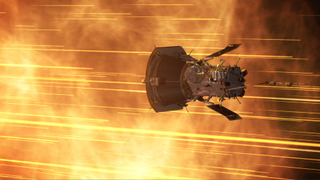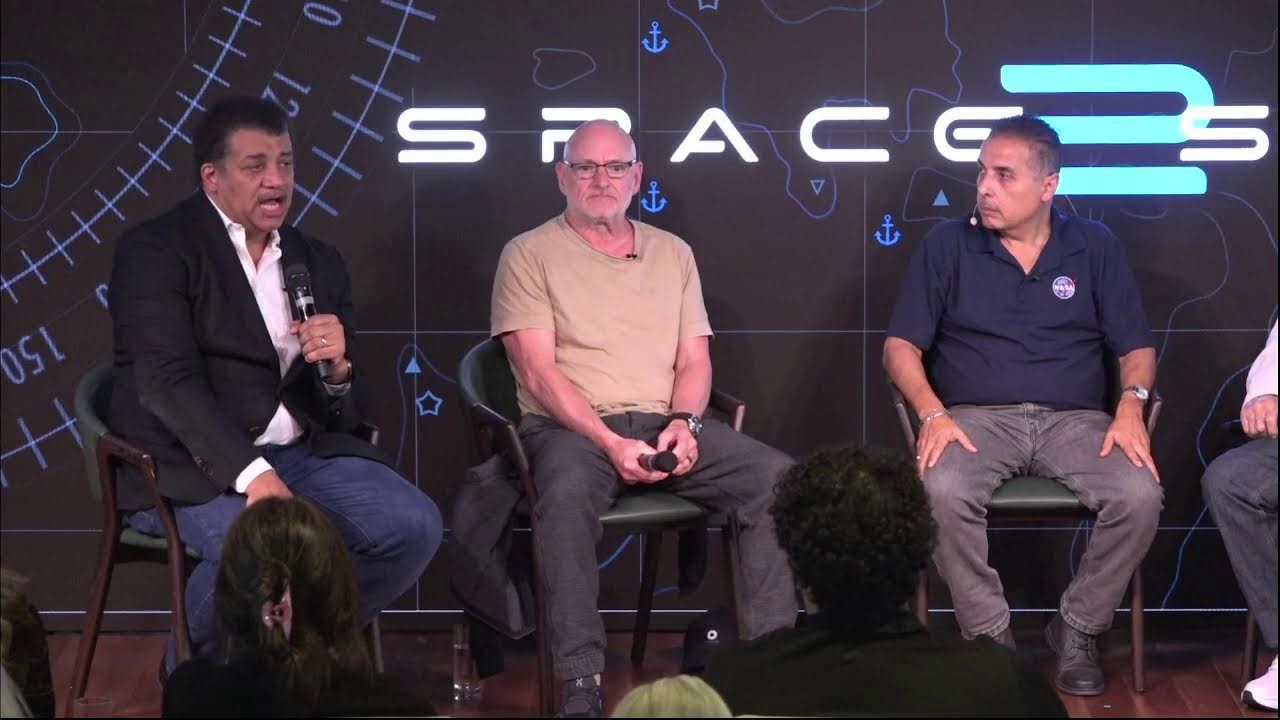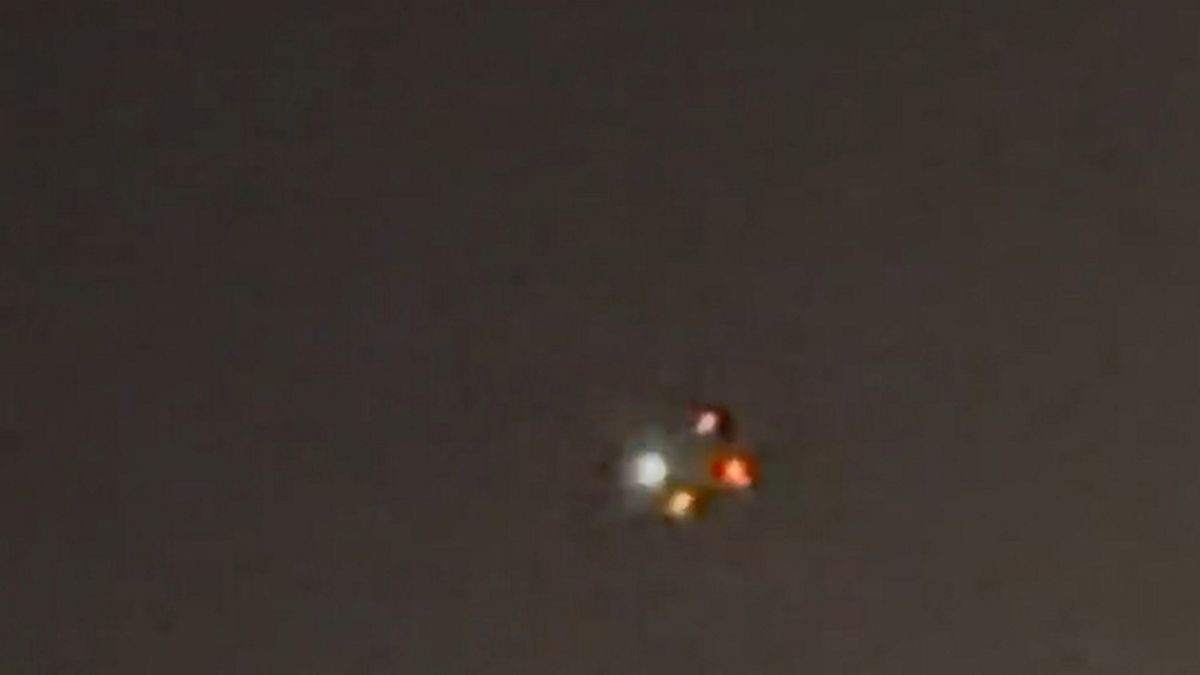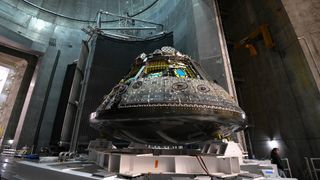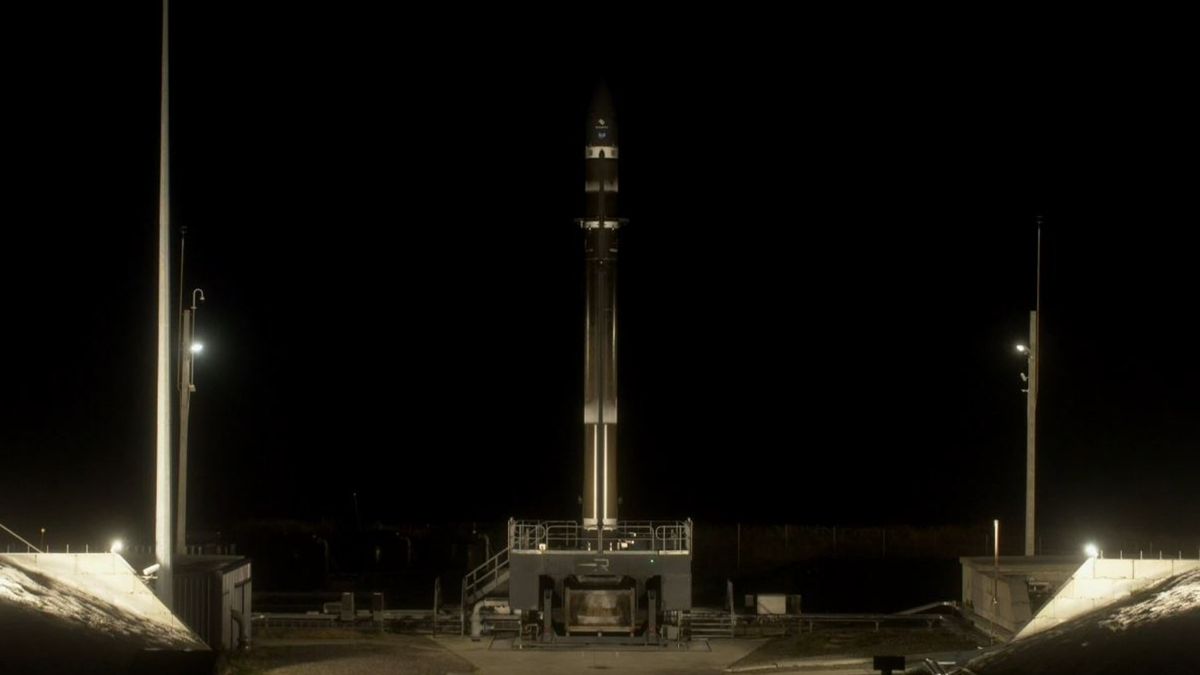A NASA spacecraft is about to give astronomers an epic early Christmas present with the closest ever flyby of the sun on Dec. 24, but if you’re wondering exactly when the ambitious solar encounter will occur, don’t worry. We’ve got you covered. The NASA spacecraft, called the Parker Solar Probe, is on course for what will be a record-setting close flyby of the sun on Christmas Eve, when it will fly through the star’s outer atmosphere at 6:53 a.m. EST (1153 GMT) and pass within 3.8 million miles (6.1 million…
Read MoreCategory: Solar System
Our solar system
Space2Sea Antarctica: William Shatner, Neil deGrasse Tyson and NASA astronauts talk exploration and science from the Drake Passage
Space2Sea Antarctica marks the inaugural voyage in a series produced by FUTURE of SPACE (FoS). This innovative journey blends Earth’s uncharted territories with the inspiring narrative of human curiosity and exploration. It encapsulates the core mission of FoS to: Embrace New Frontiers, Celebrate the Human Experience, and Elevate the Conversation. Student journalist Gabe Castro-Root of American University is chronicling the mission for FoS. You can read his latest dispatch below. Astronauts, scientists and explorers gathered aboard an Antarctica-bound ship on Friday for a panel discussion aimed at inspiring young people’s…
Read MoreDaffy Duck’s ‘full moon’ and Porky Pig fend off alien invasion in ‘The Day The Earth Blew Up: A Looney Tunes Movie’ (trailer)
The Day the Earth Blew Up: A Looney Tunes Movie | Official Teaser (2025) Only in Theaters Feb 28 – YouTube Watch On Aiming for a worldwide release on Feb. 28, 2025, “The Day The Earth Blew Up: A Looney Tunes Movie” has had a circuitous and oft-delayed path to the big screen after being abandoned by incoming Warner Bros. Discovery CEO David Zaslav as a direct-to-streaming feature, before eventually getting a theatrical presentation courtesy of the most unlikely indie distribution partner. Now check out the first hilarious trailer which…
Read MoreSee how ‘Ahsoka’ brought ‘Clone Wars’ Anakin Skywalker to live-action in this behind-the-scenes clip (exclusive video)
Just in time for Old St. Nick’s annual trek across the sky and straight down your chimney, Sony Pictures Home Entertainment, which now handles all of Disney’s physical media production and distribution, just launched “The Mandalorian” season 3 and “Ahsoka” season 1 onto 4K Ultra HD Steelbook on Dec. 3. This prestigious pair of Disney+ Original “Star Wars” shows is presented as part of the Lucasfilm Collector’s Editions series and comes supercharged with 4K Ultra HD Dolby Vision and Atmos audio. These two snazzy Collector’s Editions arrive in glossy SteelBook…
Read MorePlanes, drones or UFOs: What are people seeing in the New Jersey sky?
The recent sightings of puzzling unidentified aircraft in New Jersey and other states have triggered yet another round of unanswered questions — and fueled conspiracy theories. For one, the odd objects have sparked a visual public mayday and melee — one that might be mirroring elements of the ongoing unidentified anomalous phenomenon (UAP) issue, spurring talk of secretive saucer crashes by run-amok alien crewmembers with expired driver licenses. Mischaracterization of what’s seen. Public anxiety about what’s not known. Government officials seemingly not clear on what’s happening. Toss in Capitol Hill…
Read MoreThis Week In Space podcast: Episode 141 —Holiday Special 2024
Holiday Special 2024 – TWiS Crew’s Childhood Space Obsessions – YouTube Watch On On Episode 141 of This Week In Space, are joined by producer Anthony and our old pal Ant Pruitt to celebrate and discuss a wide variety of topics, from first space memories to our favorite space toys to what spaceflight means to each of us. It’s a warm “family reunion” you won’t want to miss! Join us for some holiday cheer, and Tariq’s “Tiny Tim” moment… Download or subscribe to this show at: https://twit.tv/shows/this-week-in-space. Get episodes ad-free…
Read MoreWatch NASA’s Artemis Orion moon spacecraft blow its top during testing (video)
An uncrewed Orion spacecraft successfully traveled thousands of miles beyond the moon and back, demonstrating its ability to one day transport astronauts to lunar orbit — but there are a few more tests the spacecraft has to ace before setting out on that cosmic feat. The Artemis 1 mission that launched on Nov. 16, 2022 saw NASA’s Orion spacecraft fly 1.4 million miles around the moon and back — the farthest a spacecraft built for humans has ever gone — and then execute a planned splash down in the Pacific…
Read MoreNASA Mars probe spies dusty, retired Insight lander from orbit (photo)
NASA’s InSight lander continues to contribute valuable knowledge about Mars, even after its retirement. Photos captured in late October by NASA’s Mars Reconnaissance Orbiter (MRO) show InSight resting on the Martian surface. While no longer active, the rover is providing researchers new data on how dust accumulates and evolves over time in the region. “Even though we’re no longer hearing from InSight, it’s still teaching us about Mars,” science team member Ingrid Daubar of Brown University said in a Dec. 16 NASA statement. “By monitoring how much dust collects on…
Read MoreRocket Lab scrubs Strix radar satellite launch for Synspective over ‘sensor data’
The spaceflight company Rocket Lab called off a planned launch of half a dozen commercial satellites due to concerns over sensor readings on Friday (Dec. 20). Rocket Lab scrubbed what was to be its 16th Electron rocket flight of 2024 less than 20 minutes before planned liftoff at 10:03 a.m. EST (1503 GMT) from the company’s primary launch site on Mahia Peninsula in New Zealand. Fueling of the rocket had already begun at the time of the scrub. “We are standing down from today’s launch attempt for Synspective to take…
Read MoreIt’s a bird! it’s a plane! It’s the 1st fantastic trailer for James Gunn’s ‘Superman!’
The new DC Universe might have technically already launched earlier this month with Max’s animated series “Creature Commandos,” but that was just an appetizer for the Big Blue Boy Scout as he swoops in for the first official trailer today for director James Gunn’s “Superman.” Starring David Corenswet as the iconic Man of Steel, “Superman” (previously titled “Superman: Legacy”) strikes multiplexes on July 11, 2025 as the premiere DCU feature film delivered under James Gunn and Peter Safran’s newly-minted DC Studios leadership and expansive vision. This provocative preview represents 18…
Read More